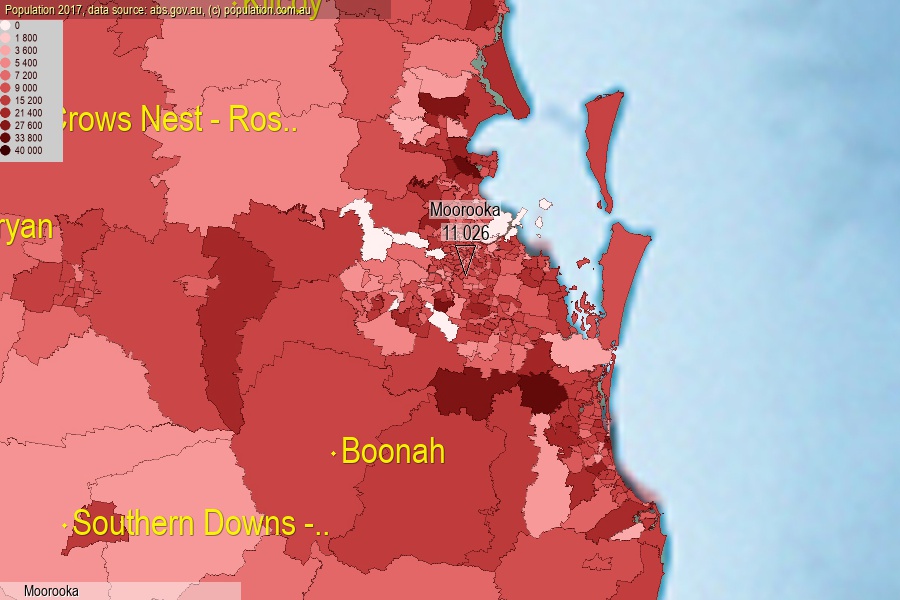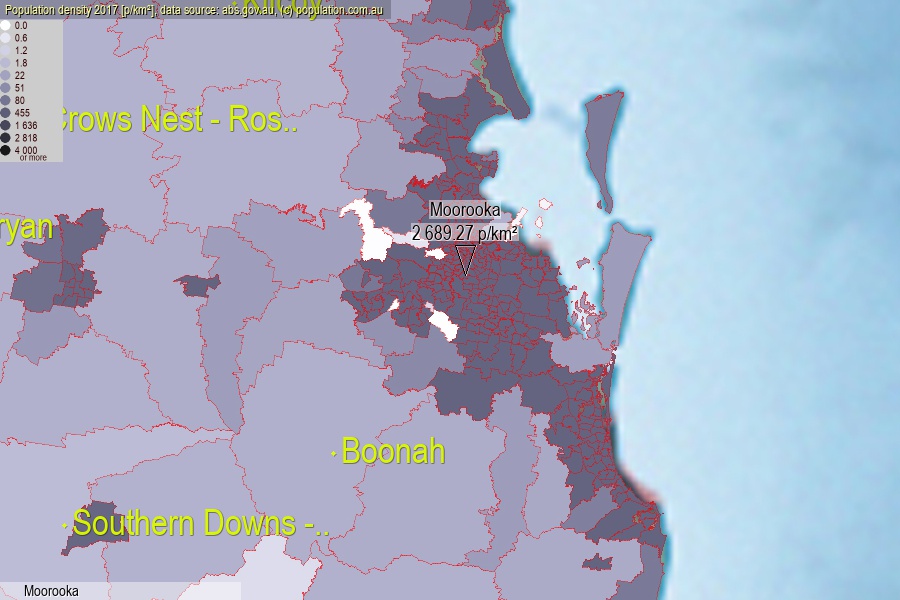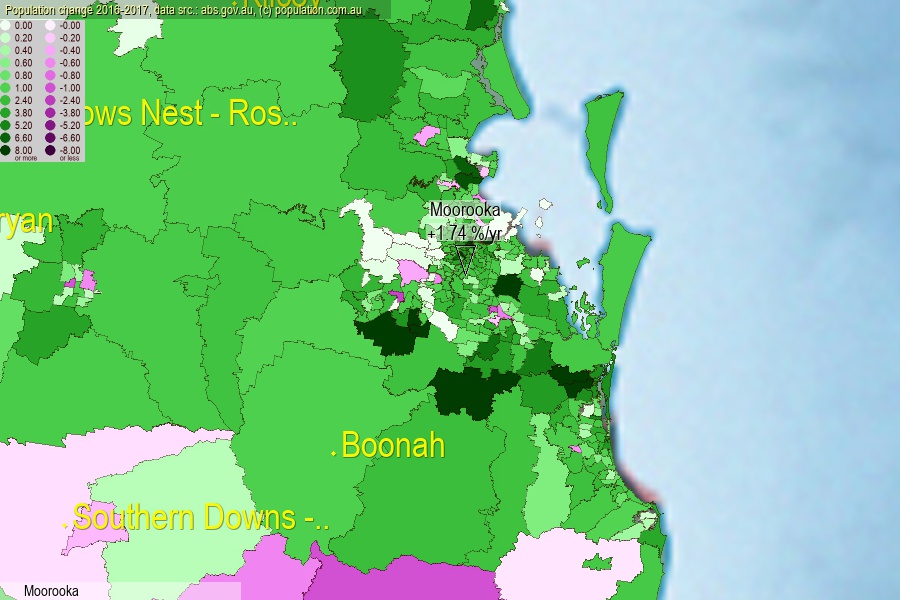 population.com.au
population.com.auLast official estimated population of Moorooka (as Statistical Area Level 2) was 11 026 people (on 2017-06-30)[2]. This was 0.04% of total Australian population and 0.221% of QLD population. Area of Moorooka is 4.10 km², in this year population density was 2 689.27 p/km² . If population growth rate would be same as in period 2016-2017 (+1.74%/yr), Moorooka population in 2025 would be 12 662. [0]



Click to enlarge. Moorooka is located in the center of the images.
Population [people], population density [p./km²] and population change [%/year] [2]
View borders » (new window) [4]
[1991-1992] -0.82 %/Yr.
[1992-1993] -1.26 %/Yr.
[1993-1994] -0.91 %/Yr.
[1994-1995] -0.33 %/Yr.
[1995-1996] +0.55 %/Yr.
[1996-1997] +0.02 %/Yr.
[1997-1998] -0.39 %/Yr.
[1998-1999] +0.28 %/Yr.
[1999-2000] +0.40 %/Yr.
[2000-2001] +1.06 %/Yr.
[2001-2002] +2.45 %/Yr.
[2002-2003] +1.70 %/Yr.
[2003-2004] +0.88 %/Yr.
[2004-2005] +1.88 %/Yr.
[2005-2006] +2.03 %/Yr.
[2006-2007] +0.84 %/Yr.
[2007-2008] +2.64 %/Yr.
[2008-2009] +2.39 %/Yr.
[2009-2010] +2.18 %/Yr.
[2010-2011] +1.59 %/Yr.
[2011-2012] +1.73 %/Yr.
[2012-2013] +0.20 %/Yr.
[2013-2014] +1.16 %/Yr.
[2014-2015] +0.54 %/Yr.
[2015-2016] +0.55 %/Yr.
[2016-2017] +1.74 %/Yr.
[0] Calculated with linear interpolation from officially estimated population
[1] Read more about SA2 and Australian Statistical Geography Standard (ASGS) on abs.gov.au
[2] Population data from Australian Bureau of Statistics (Population and density: 2017; change: 2016-2017)
[3] Digital Boundaries: Australian Statistical Geography Standard (ASGS) 2016.
[4] Border coordinates are simplifyed using Ramer-Douglas-Peucker algorithm.